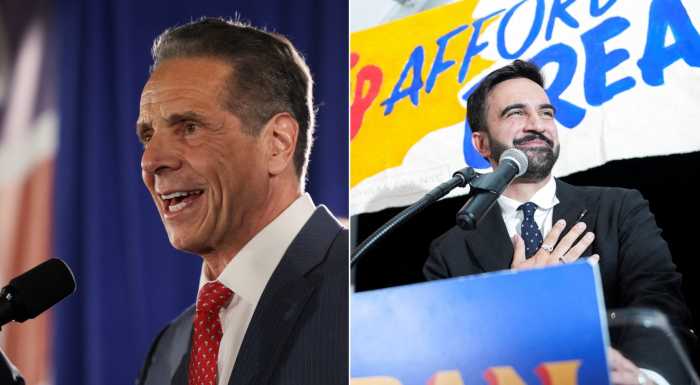As Osama bin Laden was being hunted down in Pakistan, a poetry conference was taking place in New York City. Entitled “Illuminated Verses: Poetries of the Islamic World,” it started on April 21 and concluded with a day-long forum on May 7 with presentations from scholars, poets and translators interspersed with music and dance.
“I think American audiences often know the ecstatic poems of Rumi and Omar Khayyam,” said Lee Briccetti, executive director of Poets House, one of the organizers of the conference, “but the bounty and the abundance of poetry from this part of the world is not very well known.”
Briccetti described the conference as “an opportunity to lean close and listen and learn about the diversity of Islam — it’s not a monolith — and the diversity of languages and poetry and cultures that come from all over the Islamic world.”
Having said that, she corrected herself. “The title of the conference is a little off in a way when we talk about ‘Poetries of the Islamic World,’” she said. “There’s no single Islamic world. There are many cultures and many languages. There are many [types of poetry]. There’s a kind of multiplicity that it behooves us to be more sophisticated about.”
The conference was funded by the National Endowment for the Humanities, which “believes in an informed conversation leading to a deeper democracy,” according to Briccetti. The N.E.H. asked for proposals to create programming called “Bridging Cultures” to look at various aspects of Islamic cultures. In the early 1990’s City Lore, an organization that studies America’s living cultural heritage, and Poets House had collaborated on gatherings that brought together text and oral poetries. They jointly submitted a proposal to the N.E.H. that was accepted. The grant paid for appearances by approximately 50 artists plus an evaluator and a program booklet of essays with a glossary of terms used to describe Islamic poetry.
Asia Society and the Borough of Manhattan Community College collaborated on the conference and were the venues for many of the presentations.
Briccetti said that one of the things that she found fascinating was to see how central poetry was to the lives of many of the Islamic cultures and “the way audiences interact with their poets.”
At the May 7 forum, speaker after speaker gave examples of what Briccetti had mentioned. Steve Caton, a professor of anthropology at Harvard and director of its center for Middle Eastern Studies, said that in Yemen, where he lived and first did research around 30 years ago, a new poem would be published in the newspaper every day, taxi drivers would listen to poetry tapes while stuck in traffic jams and new books of poetry would sell out immediately after publication. He also described poetry’s use in mediation in which the aggrieved parties would engage in a ritual of poetic challenge and response. “I interpreted this as a form of theater,” he said, but it was “serious stuff” that had to be resolved.

Najwa Adra, a cultural anthropologist who had done field work in Yemen, talked about a woman of her acquaintance “singing about her problems with her husband.” When Adra asked why the woman didn’t leave him, the woman replied, much to Adra’s surprise, that she had rejected seven suitors before marrying. How was this possible, Adra wondered, in a country where she thought women had no choice in who they would marry? The woman explained that she would sing her feelings as she worked, and her parents would act accordingly. The songs were two- to four-line poems, Adra explained, and like most poetry, ambiguous, but clear enough to someone who knew the singer.
The usefulness of ambiguity was frequently mentioned by the speakers at the conference — to mask political criticism and to defuse conflict. Frances Pritchett, a professor of Modern Indic Languages at Columbia University, discussed a two-line poetic form called the “ghazal,” which she described as “ambiguous, open to every possibility and transgressive.” The first line of a ghazal would set up a situation and then there would be a pause. Not until the second line was spoken would the meaning begin to be apparent.
This form of poetry was practiced by Jamil (in Arabic), Rumi and Hafez (in Persian) and Ghalib (in Urdu).
“Not all, only some can be seen in the tulip and rose,” Mirza Ghalib (1797-1869) wrote in a ghazal that Pritchett presented at the conference. His second line read, “What aspects/faces must there be, that are hidden in the dust.”
The conference on Islamic poetries did not and could not cover all of this complex subject, but although only some could be seen, it was sufficient to make clear that vastly more was there to be discovered.
Poets House at 10 River Terrace in Battery Park City has a growing library of books of poetry from the Islamic world. Videotapes of the conference will be available there as well.
Article BY Terese Loeb Kreuzer



































